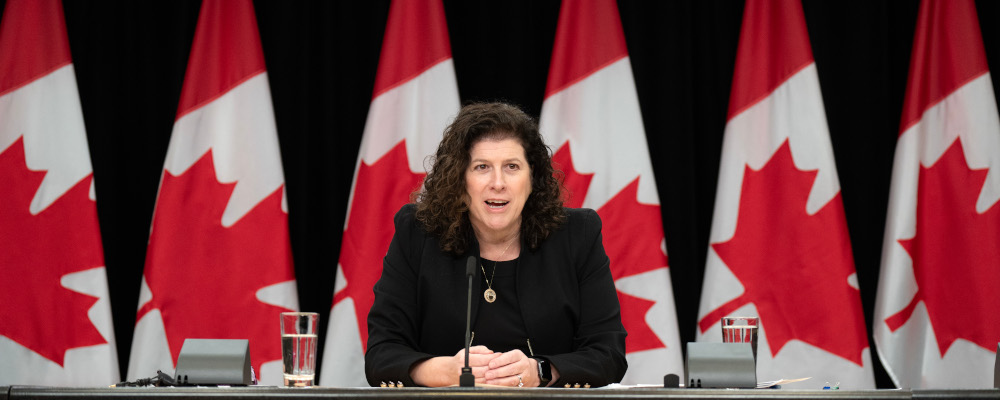As a former federal public servant—including time in the Canadian Border Services Agency and previously on the post-sponsorship scandal response—I’ve closely followed media reporting and now the auditor general’s report on the development and implementation of the ArriveCan mobile application. I’m appalled by what we’ve learned but would caution politicians from over-responding with more rules and red tape that risk slowing the system down without necessarily solving any inherent problems.
Let’s start with a recap of the lowlights of the AG’s findings, including:
- the project’s final cost was estimated at $59.5 million—hundreds of times the original estimate of $80,000—though the auditor general noted that the lack of clear record-keeping means the true cost could be higher (or lower);
- 18 percent of invoices submitted by contractors did not provide enough information to determine whether they were expenses related to ArriveCan or another information technology IT project;
- the average per diem cost for the ArriveCan external resources was estimated at $1,090—nearly double the average daily cost for equivalent IT positions in the government of Canada;
- some Canada Border Services Agency employees did not comply with the agency’s code of conduct by disclosing that they had been invited to dinners and other activities by contractors; and
- the lead IT consulting firm, GC Strategies, was involved in setting the narrow terms for a $25 million contract that it ultimately won.

It was also reported that GC Strategies has had much a deeper relationship with the government of Canada, including as many as 140 contracts (including 46 untendered) since 2015. The total value of these contracts has been the subject of some debate, though one estimate put it as high as $258 million.
While the extent of the scandal is not yet fully known (with reports that the RCMP is also looking at the AG report and its findings), what is known so far recently led former NDP leader Thomas Mulcair to declare it the “scam of the century,” noting “we are indeed facing the first major Canadian political scandal since sponsorship, and its scale risks being even greater.”
Even if one finds Mulcair’s rhetoric a bit hyperbolic, the comparisons to the sponsorship scandal are interesting and worth some reflection. For those not fully up to speed, here’s s a primer. In the late 1990s, the government of Prime Minister Jean Chretien put in place a sponsorship program to support activities to celebrate Canada, strengthen the federal presence in Quebec, and counter efforts by the Parti Quebecois to promote Quebec independence. The well-intended program eventually became associated with various financial scandals.
In February 2004, the AG tabled a damning report on the sponsorship program that found the following:
- the program operated in a weak control environment;
- those responsible for managing the program broke the government’s own rules in the way that they selected firms and awarded contracts;
- documentation was very poor and there was little evidence or analysis to support expenditures of more than $250 million;
- over $100 million of the total costs was paid to firms as production fees and commissions (for little to no work done); and
- oversight mechanisms and essential controls failed to detect, prevent, or report violations.
The AG’s report triggered RCMP investigations, a Commission of Inquiry (the Gomery Commission), and ultimately contributed to the fall of the government led by Prime Minister Paul Martin in 2006.
The sponsorship scandal (as it came to be known) eventually precipitated a long list of public administration reforms to ensure such a thing “could never happen again.” I was involved in the development and implementation of many of these operational and policy responses.
The first wave of reforms was captured in a publication entitled “Strengthening Public Sector Management: An Overview of the Government Action Plan” in 2004. In an attempt to restore accountability and trust in government, it set out several key initiatives, most of which were implemented, including:
- The re-establishment of the Office of the Comptroller-General;
- appointing professionally accredited comptrollers to sign off on all new spending in every department;
- putting in place independent audit committees, again in all departments;
- proactive disclosure of all contracts entered into by the government of Canada for amounts over $10,000;
- implementation of the Management Accountability Framework to assess management practices system-wide;
- a commitment to review the Financial Administration Act to determine whether additional compliance mechanisms were required to prevent and deter mismanagement in the public sector; and
- development of specialized programs to better train public sector executives on core management functions, particularly with respect to financial management, procurement, and internal audit.
Many of these reforms were enacted (or launched) under Martin’s government. Following the 2006 election, the newly-elected Harper government built on them with its own Federal Accountability Act, which set out various other reforms intended to prevent financial malfeasance within the government.
While many of these changes were sensible (and arguably justified), the growing ArriveCan scandal demonstrates that there are limits to regulating impropriety out of existence. The various legislative, machinery of government, policy, and oversight changes enacted following the sponsorship scandal have proven insufficient to guarantee that this kind of breach of public trust can’t happen in the 21st century.

Of note, there appears, at least so far, to be key differences in the two scandals. The biggest is the lack of a smoking gun linking the ArriveCan fiasco to the political arm of the government. ArriveCan seems to have been initiated and overseen by public servants free from political direction. At the same time, however, both the sponsorship scandal and the ArriveCan scandal do share some common elements including:
- Glaringly poor record keeping;
- sign-offs on invoices without proper documentation to verify receipt of goods/services received (required under section 34 of the Financial Administration Act);
- millions in fees and commissions for little work done of value; and
- failure of oversight mechanisms.
While it is likely too early to come to comprehensive conclusions, I am certain that there will be calls for more rules and oversight to ensure such a mess can never happen again. In this regard, let me offer up some advice from the past. I can personally verify that 20 years ago there was active consideration and discussion of putting in place reforms to strengthen deterrence and the consequences of mismanagement, including making it an offence to fail to keep a decent record of key decisions involving large sums of taxpayer money. We’ll probably hear about similar ideas again.
I understand the impulse. But I think it’s a mistake. You can’t regulate humans, fallible as they may be, out of the government. Governing inherently comes with tradeoffs, including the risk that those who populate these systems are going to screw up or break the rules in place. This is not to absolve any particular bad actors in the ArriveCan case or any others that arise in the future; quite the opposite. It is just to say that the cost of imposing further rules—including a slower, more risk-averse, and ultimately less effective public service—isn’t worth it. Worse, adding them will not even solve the core problem, anyway.
The legacy of this debacle should not be a bureaucracy burdened by even more ineffective and easily disregarded regulations that bring us no closer to achieving what should be our main objective: genuine, enforceable oversight of the system.
Put simply, I am not convinced the system needs more rules. It needs people—particularly public service executives—to pay attention to the rules, apply them, and suffer meaningful consequences when they do not. Only with such accountability can we empower the hardworking, capable individuals in government—who make up the vast majority of the federal service—and ensure they can properly do their jobs. Canadians deserve nothing less.
Recommended for You

Laura David: Red pill, blue pill: Google has made its opening salvo in the AI-news war. What’s Canadian media’s next move?

The Notebook by Theo Argitis: Mark Carney’s first major tests

The Weekly Wrap: Trudeau left Canada in terrible fiscal shape—and now Carney’s on clean-up duty

Ben Woodfinden: Lament for an ‘elbows up’ nation



